 Home
Home
rOm
Quest
Glossary
Random
Page
Search
Site
Lush
Sim
Class
Subject
Images
Help
FAQ
Sign
Up
Log
In
WANTED: Individual or team to take over this project. I'm in my 70's and want to put my feet up. Contact details in footer.
Filters are used to pass or block selected ranges of frequencies.
-
Sub-woofer: this uses a low pass filter to send the bass to the sub-woofer. The mid range and high frequencies are removed.
-
Tweeter: this uses a high pass filter to send the treble audio to the tweeter. The mid range and bass are removed.
-
Low Pass Filters are important when converting analogue signals to digital. If frequencies greater than half the sampling rate get to the converter, unwanted and unpleasant alias signals appear at the output.
Filter Breakpoint Frequency
At the breakpoint frequency of a filter ...
-
the output voltage drops to 0.7 of the maximum output voltage.
-
the output voltage power to 0.5 of the maximum output power.
-
the reactance of the capacitor is equal to the resistance of the resistor.
Passive RC Filters
-
In the graphs below, the blue vertical lines show the breakpoint frequencies.
-
Both the X and Y graph axes are log scales.
-
Passive filters attenuate the signals. If this is a problem, active filters should be used instead.
High Pass - Bass Cut
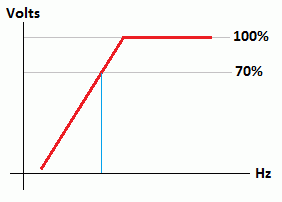
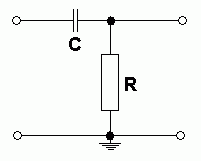
-
The capacitor blocks DC and low frequencies.
-
The capacitor passes high frequencies easily.
|
Low Pass - Treble Cut
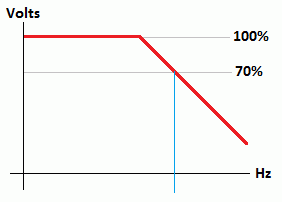
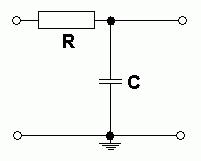
-
The capacitor has no effect on DC or low frequencies.
-
The capacitor decouples high frequencies to ground.
|
Band Pass
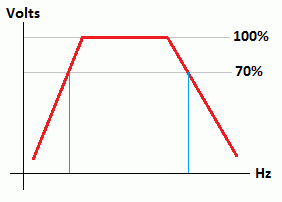
-
This circuit is a combination of
high and low pass circuits
|
Capacitor Reactance
-
Reactance is the Alternating Current equivalent of resistance.
-
It is measured in Ohms.
-
The formula: Xc = 1 / (2 π f C)
Breakpoint Frequency Calculations
-
These calculations apply to both passive and active filters.
-
At the breakpoint frequency, the reactance of the capacitor equals the resistance of the resistor.
-
R = Xc
-
Xc = 1 / (2 π f C)
-
R = 1 / (2 π f C)
-
R f = 1 / (2 π C)
-
f = 1 / (2 π R C)
-
C = 1 / (2 π R f)
Impedance Calculations
The formula below is identical to the Pythagoras triangle formula. So ancient Greeks were prescient about filter impedances!
Z2 = ( R2 + X2 ) and Z = √( R2 + X2 )

Subject Name
Level
Topic Name
Question Heading
First Name
Last Name Class ID
User ID
Question Text
image url
Help Link
Add
Delete
Clone
Edit
Hardness
Help Text
Debug
- You can attempt a question as many times as you like.
- If you are logged in, your first attempt, each day, is logged.
- To improve your scores, come back on future days, log in and re-do the questions that caused you problems.
- If you are logged in, your most recent wrong answers get remembered. This might help you and your teacher to correct your understanding.
- In the grade book, you can delete your answers for a topic before re-doing the questions. Avoid deleting unless you intend re-doing the questions very soon.

